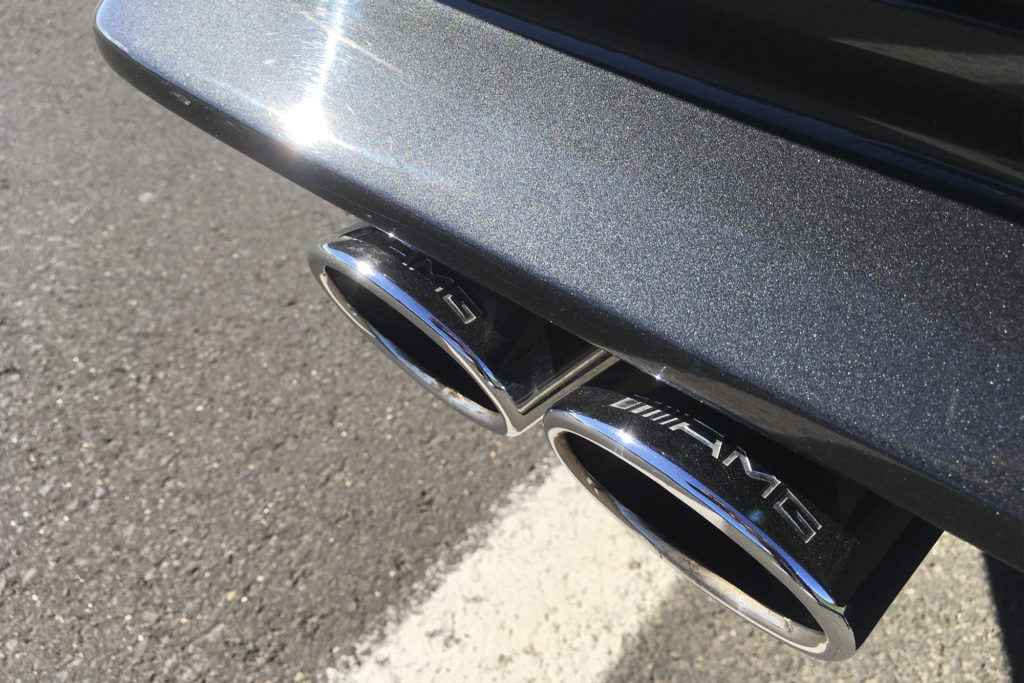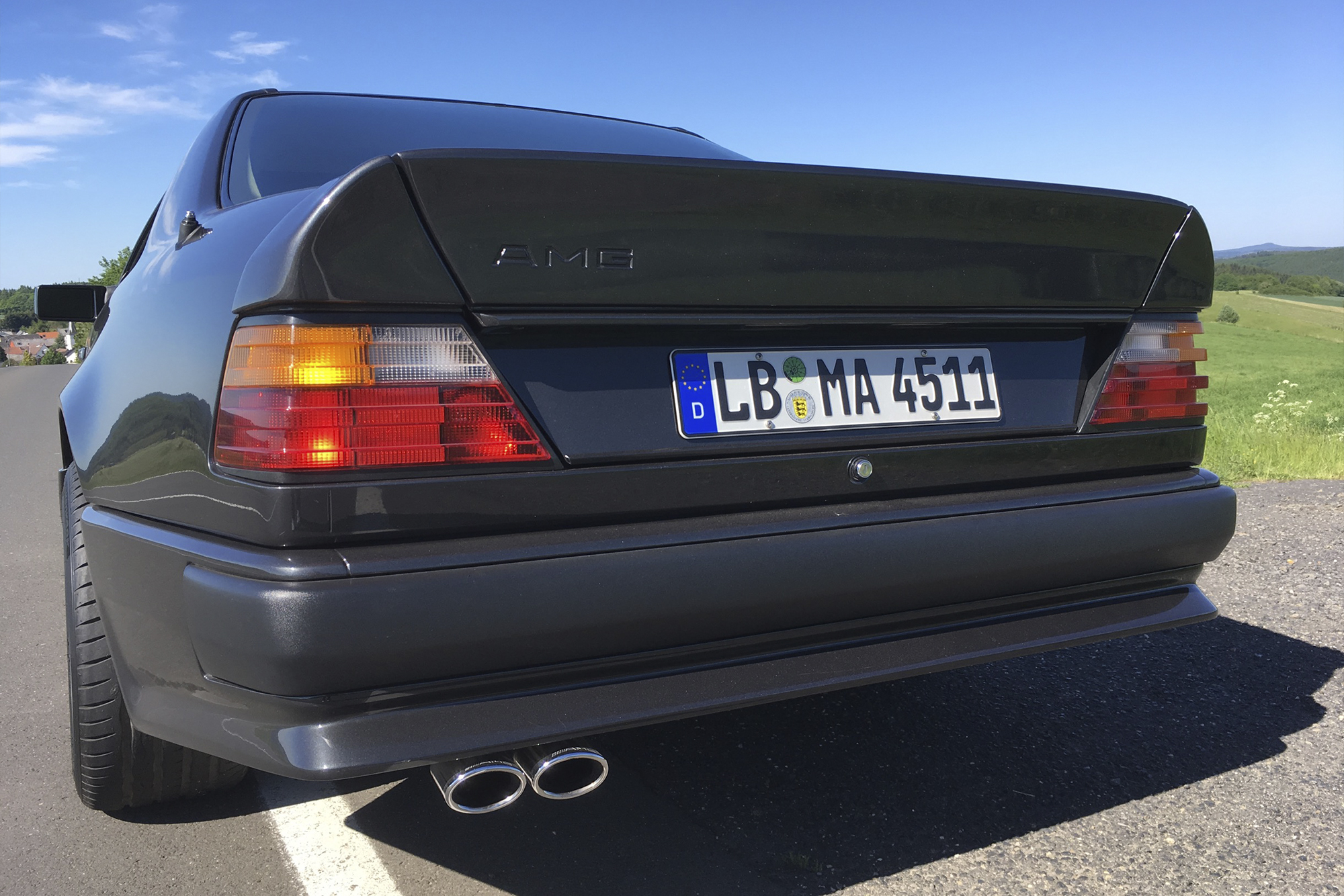Hammer Down: Driving the Legendary 1988 Mercedes-Benz 300CE AMG That Put the Brand on the Map
Few cars ever attain the truly mythical status of The Hammer. It’s only got one name, like Madonna, and is similarly intimidating in person. Today, we’ve got the keys to the Hammer — a 1988 Mercedes-Benz 300CE 6.0 AMG — as well as a full tank of gas and few hours in which to explore the German countryside and discover how AMG became AMG.
Understand that in the late 1980s, before it was a household name, AMG was just a small, independent tuning shop in the sleepy German countryside town of Affalterbach, surrounded by rolling green farmland and speed-limitless Autobahn.
The Hammer, due to its sheer audacity, made headlines around the world and put AMG on the map. Critics raved, but that was more than 30 years ago now.
Putting the key in the door it opens with a sharp click to reveal a sumptuous cabin that doesn’t not resemble the steakhouse bar at the New York Waldorf Astoria. The wood veneer looks as if it’s been polished over decades; the leather is an inky black with a soft patina. The Recaro seats are lightly bolstered and perfectly comfortable. Even now, 34 years after it was made, this car still feels as solid as a vault.
These were largely hand-built reworkings of a Mercedes 300CE. The design is subtle compared to most modern AMGs, even fitted — as our 1988 example is — with the optional widebody kit. The lower front bumper, lovely deep-dish three-piece alloys, a subtle trunk spoiler, and a shiny exhaust distinguish this from run of the mill Mercedes. There is no brash chrome badging, no oversized plaque, just three letters “AMG” debossed on the trunk lid. To a bystander, this is just some old Mercedes, which is of course part of its appeal.
Imagine seeing this Teutonic brick speeding alongside a wedge-shaped Lamborghini Countach. You’d think you were hallucinating, but no, the Hammer could keep up — or even outrun — a Countach or a Ferrari Testarossa in its day. The AMG cost just as much as those Italian supercars too.
You’d be looking at US$125,000 for a Hammer in the late 1980s, which, adjusted for inflation and currency would be roughly $450,000. (A near-mint example recently sold at auction for US$761,000.)
The tinkerers at AMG took the big V-8 from an S-Class Mercedes and added a four-valve, quad-cam head of their own design, and shoehorned it into the mid-size E-Class body. Earlier Hammer engines were 5.6-litres, but apparently not even that was enough for these engineers. So, they went and built a 6.0-litre version, the Sledge Hammer, which is what we’ve got here. The result is 385 horsepower and 417 lb-ft of torque. It’s a long way off the 600 ponies you get in the latest E-Class AMG, but still perfectly respectable.
Out on the fast, flowing, narrow countryside roads between villages, the Hammer begins to show its age. The steering is slow and vague around centre. The throttle pedal has a large dead zone at the top of its travel. The ancient automatic gearbox is the Hammer’s obvious Achilles heel. The four-speed unit changes gears in slow-motion.
Once turned into a corner, however, the Hammer feels lighter and more responsive. After the suspension settles the steering becomes more purposeful. Understeer is the default here, but it’s easily squashed by the Hammer’s torque. Our test car is on modern tires, which have too much grip for this old chassis. (It would be vastly more entertaining on 1980s-era rubber). But, even on modern tires, the Hammer still leaves two black strips on the pavement if put pedal to metal. Third gear is good for roughly 140 km/h at 6,000 rpm.
The 6.0-litre rumbles at such a low frequency it’s barely audible at low revs. Wind it up and a whole baritone choir section echoes forth from somewhere under the hood. The speed piles on like you’re in a power-boat. The nose lifts and the whole thing simply roars forward toward the horizon.
The suspension, while soft, is a delight. You expect a car called the Hammer to bludgeon the road into submission, but instead it wafts over it. It’s a genuinely comfortable car, just the sort of thing for extended road trips, the kind of car that could make rush-hour traffic tolerable.



AMG is a very different outfit today than it was in the ‘80s. The company came under Mercedes’ control in 1999 and its model lineup has grown to 60 different vehicle and engine combinations. Nevertheless, the influence of the Hammer is obvious. It set the template for AMG: muscle-bound luxury cars with gloriously oversized engines.
The absurdity and sheer joy of driving the Hammer hasn’t diminished, but it does feel increasingly like a dinosaur. The company is in the process of replacing its massive V8 engines with four-cylinder hybrid powertrains and dual-motor electric architectures. The Hammer era of AMG is sadly coming to an end; it was glorious, yes, but we can’t wait to see what comes next.

























